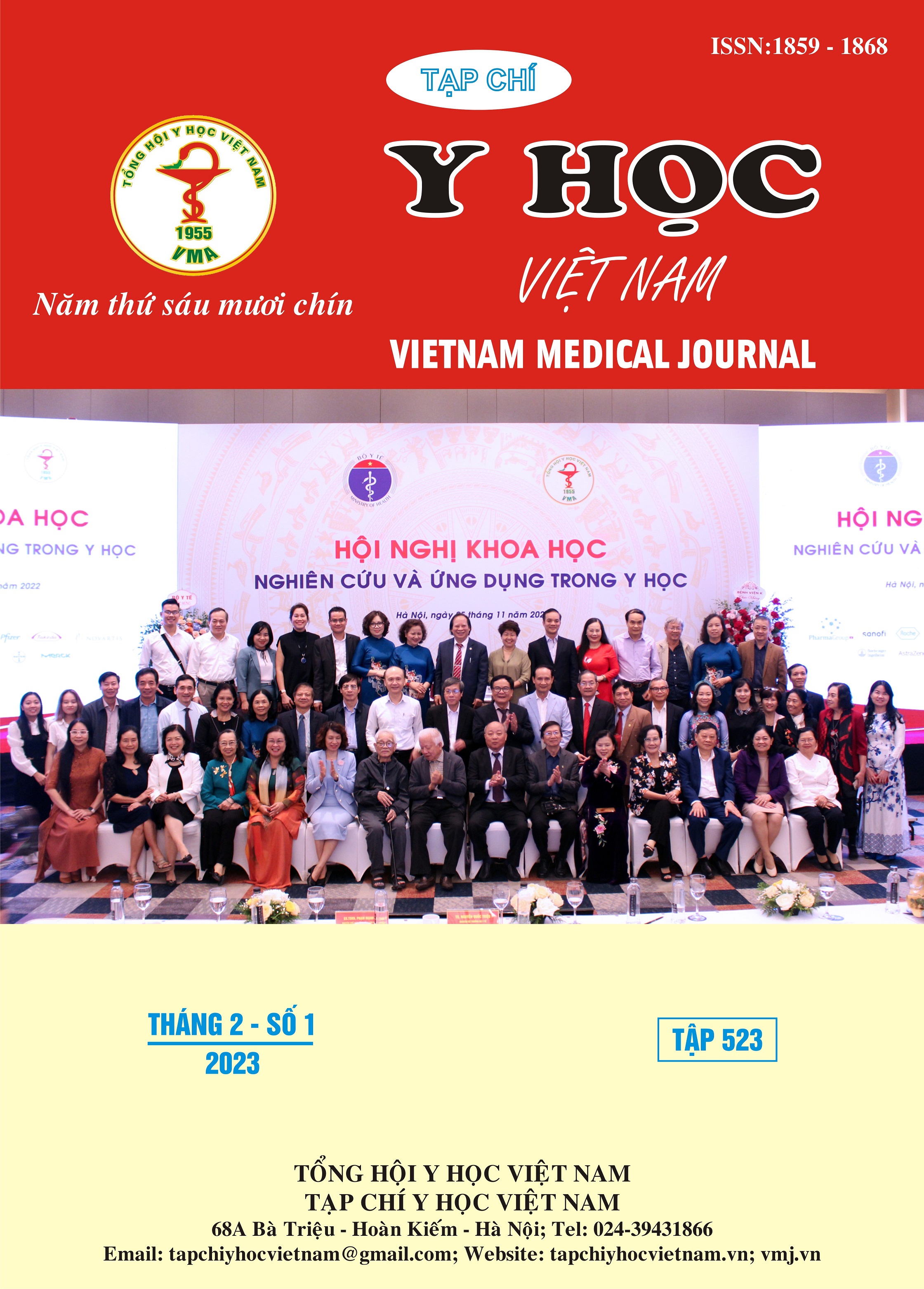APPLICATION OF COMPUTER-ASSISTED DESIGN AND THREE-DIMENSIONAL PRINTING TECHNIQUE IN COMPOSITE OROMANDIBULAR RECONSTRUCTION BY OSTEOCUTANEOUS FIBULAR FREE FLAP: A CASE REPORT
Main Article Content
Abstract
Background: Mandibular defect reconstruction with surgical guide based on computer-assisted design and three-dimensional printing technology has been widely used in the world for several decades. This technique has demonstrated great advantages over traditional methods, but has not been used much in Vietnam. We present here a case of complex oromandibular defect reconstruction after cancer resection by osteocutaneous fibular free flap with the application of surgical guide created by virtual surgery. Case description: A 62-year-old male patient was diagnosed with squamous cell carcinoma of the left mandibular gingiva. His tumor was widely resected and both segmental mandibular defect and mucosal defect were replaced by components of osteocutaneous fibular free flap with the aid of computer-assisted design surgical guide and three-dimensional printing technology. The result is good in both terms of function and aesthetics of the face.
Article Details
Keywords
computer-assisted design, three-dimensional printing technique, oromandibular reconstruction, fibular free flap
References
2. S. Sharma and S. Bera, “Oromandibular reconstruction with free fibula osteocutaneous flap after oncologic resection: retrospective analysis of surgical experience and operative outcome of 56 cases,” International Surgery Journal, vol. 6, p. 3674, Sep. 2019, doi: 10.18203/2349-2902.isj20194423.
3. J. Weitz, F. J. M. Bauer, A. Hapfelmeier, N. H. Rohleder, K.-D. Wolff, and M. R. Kesting, “Accuracy of mandibular reconstruction by three-dimensional guided vascularised fibular free flap after segmental mandibulectomy,” Br J Oral Maxillofac Surg, vol. 54, no. 5, Art. no. 5, Jun. 2016, doi: 10.1016/j.bjoms.2016.01.029.
4. B. D. Schultz et al., “Classification of mandible defects and algorithm for microvascular reconstruction,” Plast Reconstr Surg, vol. 135, no. 4, Art. no. 4, Apr. 2015, doi: 10.1097/PRS.0000000000001106.
5. A. F. Mavrogenis, V. G. Igoumenou, I. Ignatiadis, K. Mourouzis, G. Rallis, and S. G. Spyridonos, “Microsurgical reconstruction of complex oromandibular defects: An update,” Injury, vol. 50 Suppl 5, pp. S117–S122, Dec. 2019, doi: 10.1016/j.injury.2019.10.061.
6. J.-S. Hou et al., “Application of CAD/CAM-assisted technique with surgical treatment in reconstruction of the mandible,” J Craniomaxillofac Surg, vol. 40, no. 8, Art. no. 8, Dec. 2012, doi: 10.1016/j.jcms.2012.02.022.
7. Q. N. Dong et al., “Computer-assisted fabrication of a cutting guide for marginal mandibulectomy and a patient-specific mandibular reconstruction plate: A case report,” Journal of Oral and Maxillofacial Surgery, Medicine, and Pathology, Mar. 2021, doi: 10.1016/j.ajoms.2021.02.013.
8. S. Mahendru et al., “CAD-CAM vs conventional technique for mandibular reconstruction with free fibula flap: A comparison of outcomes,” Surg Oncol, vol. 34, pp. 284–291, Sep. 2020, doi: 10.1016/j.suronc.2020.04.012.


